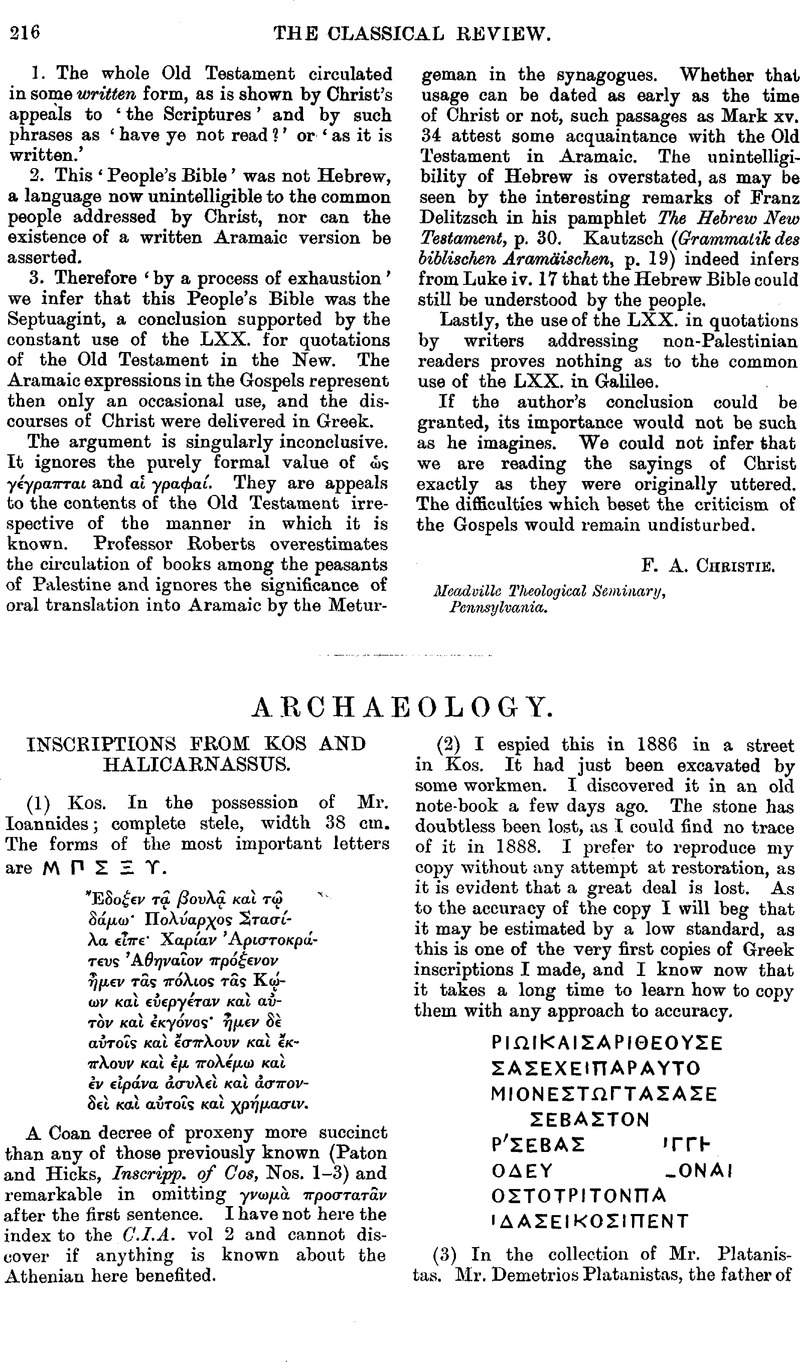No CrossRef data available.
Published online by Cambridge University Press: 27 October 2009

page 219 note 1 According to F. the Perikles and the Amazon are about contemporary.
page 221 note 1 Attributed by F. to Lykios, the son of Myron. The original of a similar statue at Dresden he attributes to the school of Alkamenes.
page 221 note 2 F. points out that a beardless Asklepios by Skopas is known from Paus. viii. 28. 1.
page 221 note 3 A good replica of the head (identified last year by Prof. W. Klein) is in the Br. Mus.
page 221 note 4 F. agrees with S. Reinach and Purgold in thinking that the group of the Arkadian god Hermes nursing Dionysos the god of Elis, was intended to symbolize some treaty between Arkadia and Elis, but instead of referring it to about B.C. 363 after the troubles in the Altis, he suggests the treaty concluded in B.C. 343 between the Arkadians and the aristocratic party in Elis.
page 221 note 5 According to F. the elder brother, not the father of Praxiteles. His Eirene he connects with B.C. 375, when yearly offerings were instituted in honour of Eirene after the victories of Timotheus, and shows well that the statue by no means forms a transition from fifth to fourth century art; it is a conscious reaction towards Pheidian models.
page 222 note 1 The beautiful photograph of this head lately published by Messrs. Brauu should help the public to appreciate this view.
page 223 note 1 F. points out that here again Skopas would appear as the forerunner of Lysippos, the composition of the Eros stringing his bow being clearly derived from the Aphrodite with the shield.
page 223 note 2 To him F. attributes (with Koepp) the original of the Rondanini Alexander (Munich); as also the original of the Diane de Versailles, whose marked likeness to the Apollo has long been recognized.
page 223 note 3 F. has apparently made here another brilliant identification. He however a little spoils his theory, by seeing something beyond Pheidian forms in the head, i.e. a peculiar emotional character which makes him bring forward his Elder Praxiteles, and try to prove that in attributing the Parnopios to Pheidias Pausanias erred once again—ne quid nimia!
page 224 note 1 There is in the Louvre another original bronze— the Beneventum head now published in the Brunn-Bruckmann Denkmäler—in which Furtwängler recognizes Polykleitan elements combined with certain traits reminiscent of the ‘Lemnian.’ Years ago he was the first to draw attention to this magnificent example of the purest Greek workmanship; two splendid heads of boys (Munich 302, and Naples, Rayet, Monum. ii. 67) he also pronounces in his present book to be Greek originals. These original bronzes are beginning to form a series which will certainly grow. Their value to our knowledge not only of ancient technique but of ancient athletic life can scarcely be overestimated.
page 225 note 1 S. Reinach in the Revue Critique, 5fév. 1894.
page 226 note 1 See Head, , Historia numorum, p. 488Google Scholar. These coins are well represented in the British Museum and will be photographed in the Museum Catalogue of the Coins of Lesbos that I am now engaged in preparing. The specimens in question are all of Imperial times, though they do not bear the names and heads of Emperors.
page 226 note 2 On the obverse of coins of the time of Tiberius inscribed ⊙EOΦANHC ⊙EOC. The Archedamis—APXEΔAMIC ⊙EA—of the reverse of these coins is unknown but is supposed to be the wife of Theophanes.
page 229 note 1 Berl. Phil. Woch. 7 April 1894.
page 229 note 2 Athenaeum, 7 April 1894.
page note 3 Ibid. 17 March 1894.